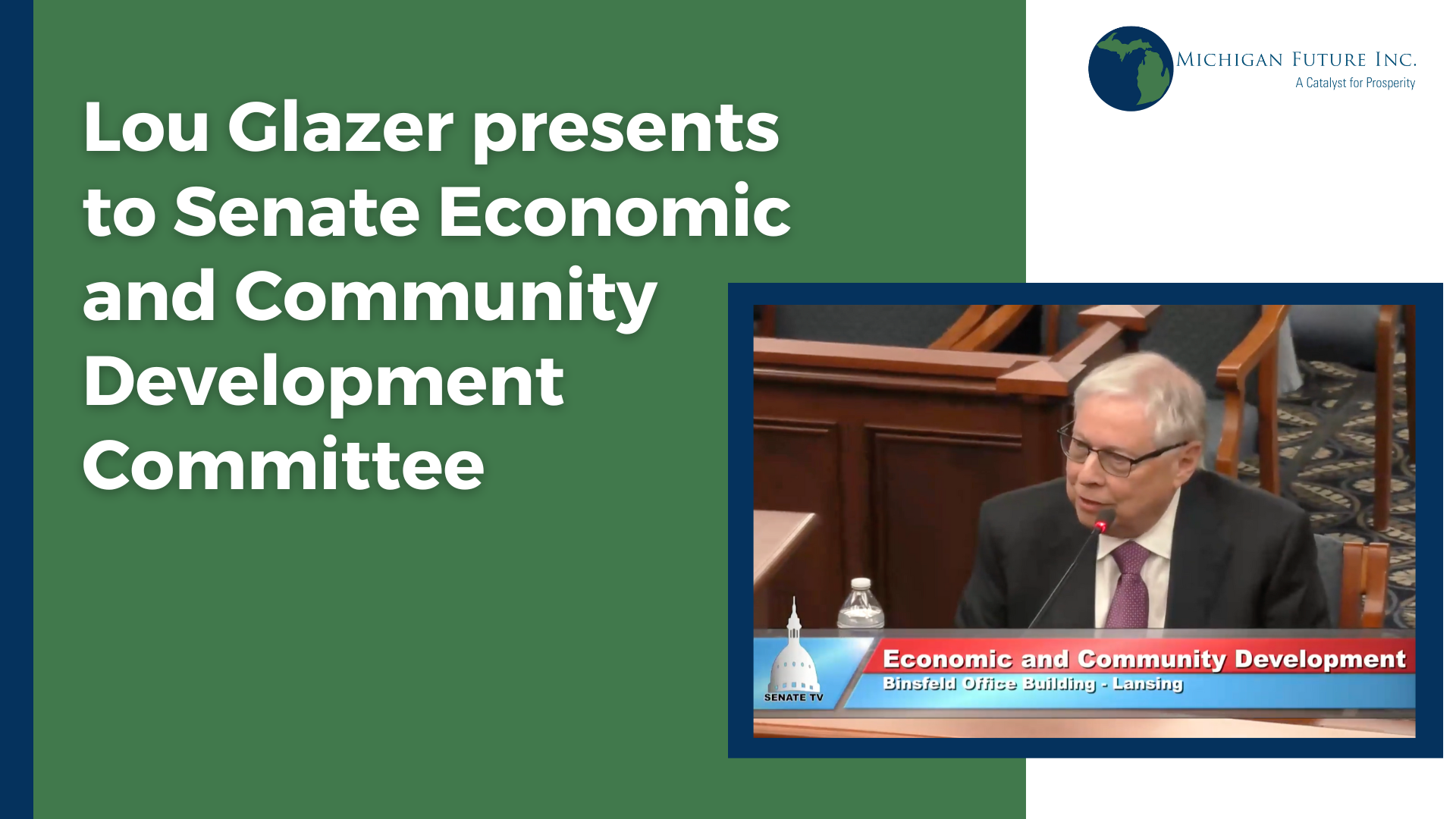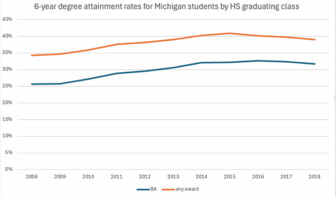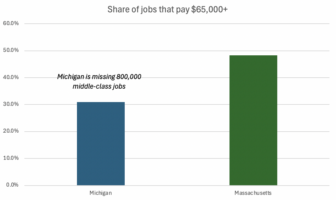We are working on our next report: an assessment of the national, Michigan, metro Detroit and metro Grand Rapids economies in the fifth year of a national expansion.
We continue to believe that per capita income is the best single measure of a state’s or region’s economic well being. In the report we focus on the portion of per capita income that comes from employment earnings (both wages and employer paid benefits). We do so because employment earnings are the predominant engine of long term sustainable growth in the standard of living.
Net employment earnings account for about two-thirds of per capita income. The other two components are interest, dividends and rents; and government transfer payments.
Net employment earnings is the combination of how many jobs employers provide and what they pay in both wages and benefits. This is what states and regions focus their economic development policy on––creating an environment for employers to provide jobs ideally with high wages and benefits. Its allow us to assess how well a state or region is doing in creating more and better jobs––Governor Snyder’s economic development goal for Michigan.
So who are the top ten states in meeting the Governor’s more and better jobs goal?
Connecticut | Massachusetts | New Jersey | Maryland | North Dakota | New York | New Hampshire | Alaska | Virginia | Minnesota
How do you make this top ten list? There are two paths to high prosperity. One, for a small number of states, is high energy or grain (largely for ethanol) prices. (The data are from 2013. It will be interesting to see how well these states do now that commodity––particularly oil––prices have declined steeply.) The other path, which applies to most states, is that:
•They are over-concentrated, compared with the nation, in the proportion of wages coming from knowledge-based sectors
•They have a high proportion of adults with a four-year degree or more
•They have a big metropolitan area with even higher per capita income than the state
•In that big metropolitan area, the largest city has a high proportion of its residents with a four-year degree or more
North Dakota and Alaska are the commodity-based states in the top ten. The other states all are top ten states in college attainment and rank from 1-18 in the proportion of wages from high education attainment services. And the non commodity-based top ten states are anchored by at least one high-prosperity region with a highly educated central city.
This is the top ten list that Michigan should want to get on. A place with lots of jobs that pay well. The kind of place that has a broad middle class.
How is Michigan faring? Michigan is 38th in net employment earnings per capita, 26th in proportion of wages from high education industries and 33rd in the proportion of adults with a four year degree. Michigan has never ranked this low with an expanding domestic auto industry. It now is structurally a low-prosperity state.
As we have written previously, clearly not time for the celebration too many of our leaders seem to be having. We have a long ways to go to return to the high-prosperity state we were for most of the 20th Century.






